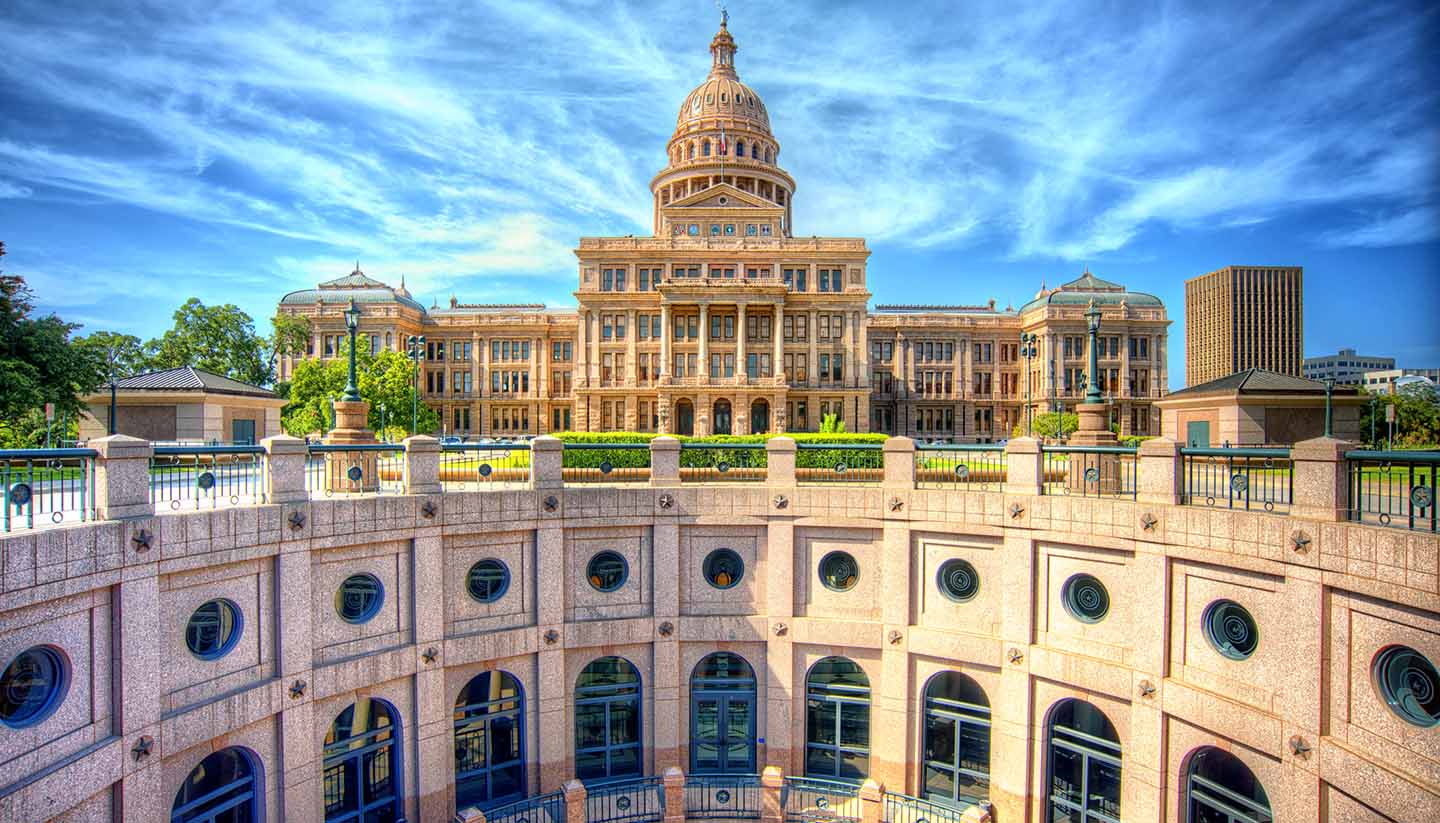Texas Weather, climate and geography
Weather and climate
Best time to visit
Texas is the second biggest state in America (Alaska is the largest state) with varying climates but, on average, temperatures rarely go above 35°C (96°F) or below 0-5°C (32-45°F).
Forest fires generally occur from June to August in the west. Tornadoes tend to occur in April, May and June in the north while there are risks of hurricanes and flooding in the south/southeast year round. The average precipitation varies - the west has 8.7 inches (220mm) annually, the north has 37 inches (940mm) annually, and the south has about 60 inches (1,500mm) annually.
Austin
Austin is the Texas capital, situated in the southeast and 234km (145m) west of Houston. Austin can reach highs of 36°C (97°F) in the summer months and lows of 5°C (45°F) in the winter months. Summers can be sweltering so pack some sun cream with you. For more information, see the weather in Austin and the best time to go guide.
Dallas
Dallas is a thriving metropolis in north Texas. Dallas can reach highs of 36°C (96°F) in the sweltering summer months and lows of 3°C (37°F) in the winter months with some snow in January and February. Expect mild temperatures for the rest of the year. For more information, see the weather in Dallas and the best time to go guide.
Houston
Houston is the most populous city in Texas and covering a large part of the gulf coastal plain where the terrain is mostly flat and marshy. Houston has a humid subtropical climate with long hot summers and mild winters. August is the hottest month with temperatures ranging from 24°C (75°F) to 34°C (93°F) while January is the coldest month with temperatures ranging from 7°C (45°F) to 17°C (63°F) – which is still comfortable to many. Extreme weather is likely to occur around this area with frequent tornadoes and hurricanes. For more information, see the weather in Houston and the best time to go guide.
Required clothing
For summer, bring lightweight clothing to keep yourself cool. Sunglasses, hats and sun cream are advisable. For winter, bring layers to keep yourself warm. Hats, scarves and gloves are advised. Bring waterproof clothing if you're going down south.
Geography
Texas borders Louisiana, Oklahoma, New Mexico and Arkansas as well as Mexico. Texas shares three rivers with its neighbours. The Rio Grande river borders Chihuahua, Coahuila, Nuevo León and Tamaulipas in Mexico. The Red River borders Oklahoma and Arkansas, and the Sabine River borders Louisiana in the United States. Due to the size of Texas, the terrain is different across Texas, with deserts in the northwest, piney woods in the southeast and mountains and hills in central Texas.


